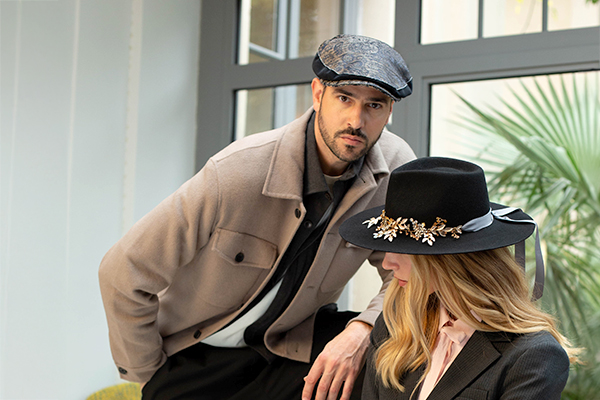


More than a simple protection against the cold, beanies have become over the years true fashion accessories during the winter season. Indeed, the female beanie, male beanie and/or toddler beanie brings the finishing and fashionable touch to clothing style. Some brands played their cards right as to this trend, as is the case of the Cabaïa beanie and its immediately recognizable. Other brands that are available on our website offer a varied range of beanie for all the family member. It’s the case of Stetson, Pipolaki or Kopka.
From the oversize beanie to the pompom beanie, different shapes are allowed for this headgear of a warming accessory. Indeed, the latter covers more or less the head, the ears and the neck, and features edges or not. Lastly, different matters can compose it. However, when the winter comes, wool will be the most used!
The history of the beanie is rich and distant. Currently, it is the oldest known hat shape. It first appeared in Antiquity with a round-shape beanie that stopped at the ears and was made with leather or natural fibers. In Quebec, the word "tuque" refers to the beanie that achieves the traditional attire inherited French marine settlers.
In the Middle Age, the shape of the headgear gets extended and a tie is added at both sides to give substance to a hood in western Europe. The latter was then considered as a distinguished and refined item of clothing. In Russia and in Scandinavia, the ushanka establishes itself more as an adapted headwear against the cold. Nowadays, the beanie designates a headgear which is generally in wool, worn in the winter to get protected from the cold and the snow. And it can be adorned by a pompom on its top for an additional original touch.
Like many hats, the beanie is unisex. In fact, it can suit men and women and children. What is the recommended size? In the same as the hat or the cap, the beanie is a headgear. Nevertheless, unlike the these, this accessory is generally offered in one size and can adapt any morphology. It will be up to you positioning this fashion accessory as you see fit. The most important thing being to choose a model according protection sought and to the desire.
How to wear a beanie? This is an accessory that can be worn in different ways, according to the desired effect and to the shape. For instance, you can wear it tucked in the head or more on the back. The Cuff beanie also illustrates the fact that you can roll up the bottom of the model to create another stylish effect and add volume.
The beanie is a multi-faceted accessory. In fact, there are numerous variations of this comfort fashion piece:
- The oversize and long beanie with its drooping shape allowing to adopt a modern and urban look.
- The short beanie, the traditional shape available in several colors and prints to satisfy men and women.
- The visor beanie which allies comfort of the beanie and style with a visor.
- The Peruvian hat is unmistakable among all by the use of vibrant colors and by its shape which composed of earflaps and side braids.
- The pom beanie is topped with a pompom. It is available in classic colors such as black, gray or white, but also in fancier tones. It is often a woolen beanie to keep warm when skiing.
- The miki or the docker beanie, mixes the shapes of the beanie and the cap to result in a short beanie, of a navy style. It’s a fashion piece by excellence established within latest fashion trends, be it among women or men.
The woolen beanie is traditionally the indispensable accessory used for winter sports, on trails, combined with a very warm pair of gloves bien chaude and with sunglasses. Indeed, the winter beanie protects from the cold and the sun when it’s composed of a warm matter like wool or cashmere beanie. Beanies knitted with thin wools are the most comfortable. The acrylic beanie, angora and/or fleece caps are also recommended during the winter. In another style, in frosty weather, ushanka is the ideal accessory to quickly keep warm and adopt a unique and original style.
Nonetheless, there are today variants of this accessory in lighter materials, cotton for example, which can be worn all year long. In fact, the summer beanie can be used in city or during sports practice like rambling. Regarding the maintenance of the beanie, it is necessary to carefully read the composition label of the model before cleaning it. As a rule, it is recomended to hand wash your beanie with warm water before wringing it in a flat towel to prevent it from deforming.
All occasions are good to wear a beanie. At Bon Clic Bon Genre, we’ve understood that. That’s why we’re offering a wide selection of beanies at all prices in order to adapt to the demand. Enjoy also the special offers concerning beanies. These accessories are also available in different matters, shapes and colors to adapt to everybody’s desires, needs and style.
Choose among our models from leading brands in the hat industry the accessory that suits you best and take advantage of the free shipping from 70 euros! Enjoy also the visit of our web site to discover (or discover again) our range of hats, baseball caps et caps beanies.